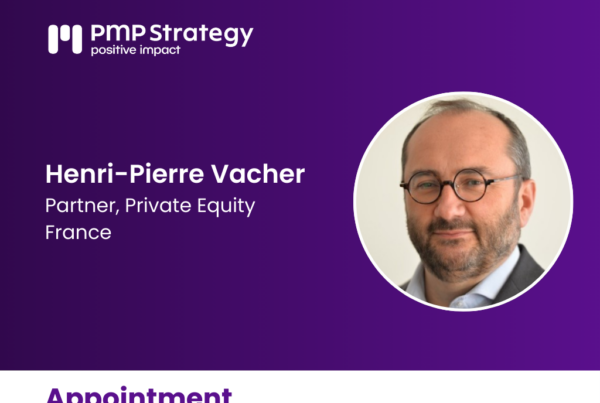On November 22, the Cercle Lab organized a morning devoted to occupational health, questioning the dreams of those involved in complementary social protection in this area, following the conclusions of the Lecocq report. This morning brought together, in addition to Bruno Dupuis, co-author of the Lecocq report, actors representing occupational health services, but also actors of complementary social protection (provident institutions, mutuals, insurers, brokers) and emerging actors, offering services based on new technologies.
The Lecocq report, published in August 2018, underlines the dysfunctions of the occupational health system in Franc, in particular because of the large number of players involved in the field. The report proposes to reorganize the system in order to clarify the offer of services to companies and employees. This need for changes is explained in particular by a change in risks, which have been modified under the effect of demography and contemporary habits.
Governance, a question that is the subject of debate between stakeholders
If the need for reform on governance and organization is shared between the different actors, the solutions are less so. The Lecocq report recommends the creation of a one-stop-shop– without this implying a single physical location – near businesses, with a recalibrated range of services based on five pillars: monitoring the state of health, maintaining employment, advice on prevention, training and epidemiological monitoring. At the higher level, the drafters of the report advise the creation of a regional steering structure, and a national structure dedicated to the definition and the coordinated implementation of the occupational health strategy, under the name of France Occupational Health
Without calling into question the regulatory and strategic role of the State, Martial Brun, Managing Director of Présanse, considered that this new governance should not lead to a form of subjugation of companies to national directives. Denys Brunel, President of the SEST (Service aux Entreprises pour la Santé au Travail) and President of the CHNP (National Chamber of Owners), for his part defends an organization based on regulated competition between private actors, in order to encourage innovation and to support as much as possible the contemporary disruptions of medicine, and to allow each company to choose the actor answering the best to its problems.
The company, the main player in the health of its employees
All the participants stressed that the main player in employee health was their employer. “The company is a territory of messages, where we can do prevention in a broad way”, according to Bruno Dupuis, associate senior advisor at Alixio and co-editor of the Lecocq report. This is also the speech of digital start-ups like Goalmap, which directly target companies and their HR departments in order to offer employees coaching and well-being programs at work.
In terms of prevention, the notion of specifications finds a certain echo, considering that it is a document that can be worked on on a recurring basis by the key bodies of the company, without having the technocratic aspect. of the single document. The specifications would allow companies and branches to consider additional means for prevention, while being less in regulatory compliance but more in preventive action.
The importance of prevention was underlined during all the discussions. Indeed, it is for many a new era, after the end in 2016 of that centered on the compulsory generalized visit, which was particularly time-consuming for occupational physicians.
New players promote innovations for occupational health
New players are emerging on the occupational health scene. This diversification takes place from two perspectives, with traditional players in the health sector, and with new or even disruptive players, linked to digital.
Among the traditional players in the health sector, complementary organizations have launched strong actions in recent years. Thus, the VYV group provides support for prevention programs within companies, starting from a diagnosis and then proposing actions that may be profitable for the company. This activity represents 1,000 shares for the Vyv group in 2018, for an expected turnover of €400,000. The AG2R La Mondiale group has been recognized for its prevention actions over the past ten years, since they now represent 25 programs in a dozen professional branches, for around €12 million, or 3 to 4% of the amount. contributions. Certain programs on baker’s caries or asthma have been accompanied by the production of scientific documentation with the monitoring of regular cohorts.AG2R has chosen to rely on the professional branches for these actions, because of their high cost, and in order to easily reach the very small and medium-sized businesses most exposed to this type of risk.
On the bancassurance side, CNP is developing an approach that is complementary to that of the players in the sector, in order to correct its weaknesses: thus, CNP has launched ophthalmological appointments in 72 hours, and believes in the strong development of this activity, as evidenced by the creation of the Lyfe entity, a digital platform for health and welfare services launched in 2015. Some brokers, such as Damien Vieillard-Baron, Chairman of GEREP, are convinced that occupational health is a useful field of intervention, and support their customers by offering the GEREP Prévention Santé platform which supports employees on the quality of life at work or on the management of emotions, by offering digital and face-to-face support.
Some new players are emerging in the field of health at work, with a start-up profile. While Padoa focuses its action on SSTI customers, Domplus offers solutions to insurers, brokers and companies alike, presenting itself as a trusted third party allowing prevention support or the implementation of a network. psycho-medical experts. Similarly, La Valériane offers companies solutions adapted to each type of risk, at a cost of around €20/year/employee, for example with regard to the platform dedicated to stress, from diagnosis to improvement solutions. Partnerships are emerging between these two types of actors, such as between Goalmap and CNP. This collaboration should make it possible to explore the various possible business models.
Innovations in the sector must finally meet the needs of new audiences, such as the self-employed, whom the Lecocq report proposes to integrate. Indeed, the state of health of business leaders has an impact on its employees.
A challenge: establishing a culture of return on investment
In this challenge, the role of data will be key:they will make it possible to better understand the health status of employees at work over the long term, by building coherent cohorts. It becomes essential to measure the impact of the actions carried out, by setting indicators and quantifying job retention and thus the effect on the social accounts. This data revolution will have to go through a standardization and an evolution of the processes towards digitization, as well as by the decompartmentalization between the Personal Medical File and the Medical File of Health at Work. Finally, Martial Brun underlined the role that the State should take in this area, by sharing measurable objectives in terms of performance with all the players in the sector, in order to draw up an effective mapping using the data now available. .
Some players, like the Issy-les-Moulineaux SEST, have already implemented measures aimed at measuring the effectiveness of investments, by offering a contribution contractually constructed on a low fixed basis, with a bonus set according to the achievement of objectives such as a reduction in sick leave, work accidents or turnover within the company. Likewise, AG2R La Mondiale has developed the good practice of only launching an action in favor of occupational health if its effectiveness could be truly measured, in particular by surrounding itself with experts from each branch.
This perspective designed around performance will also make it possible to involve companies more strongly, if we clearly manage to make the link between health in the company, performance and its attractiveness.
Emmy-Lou Nicolaï





